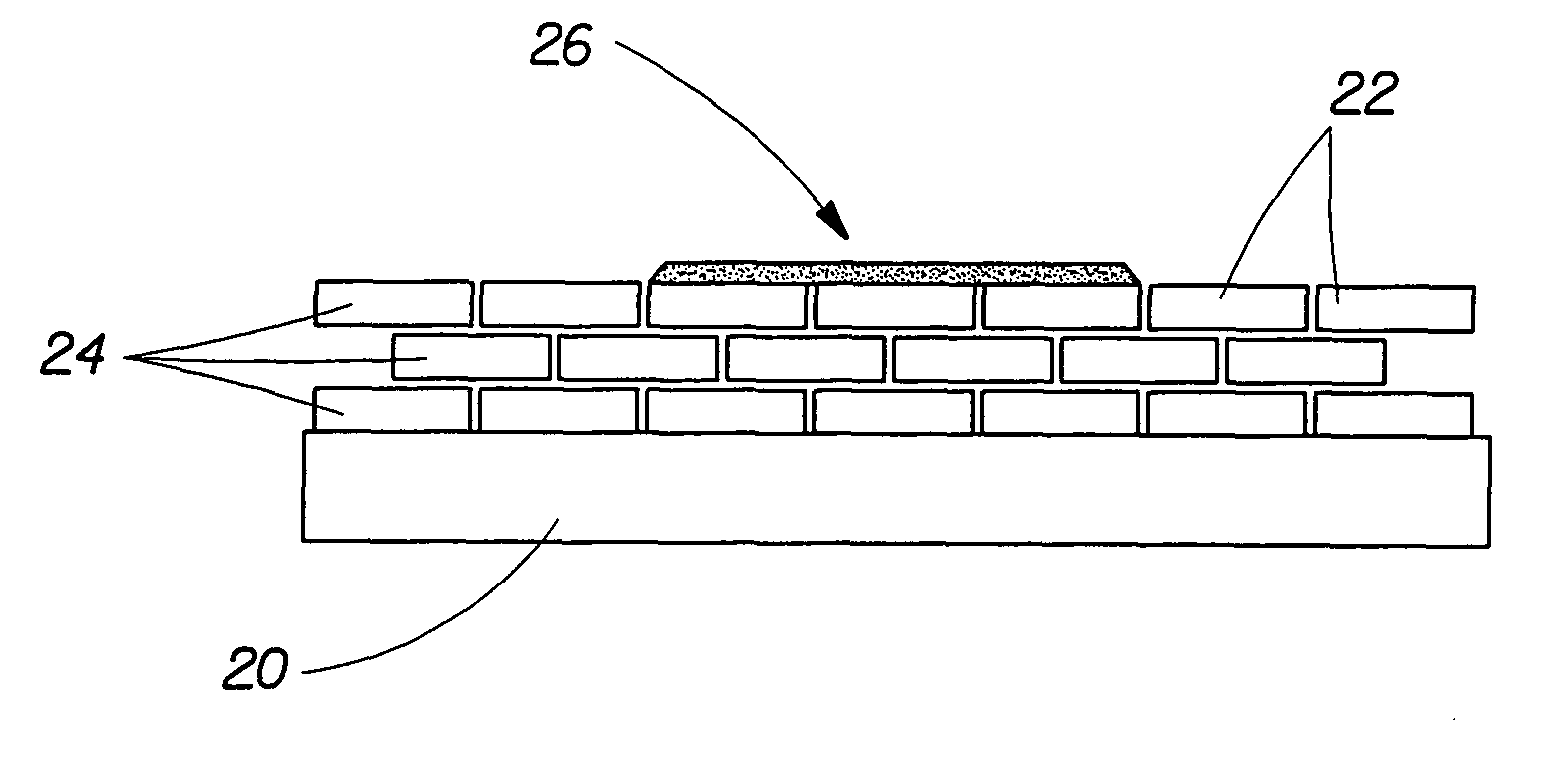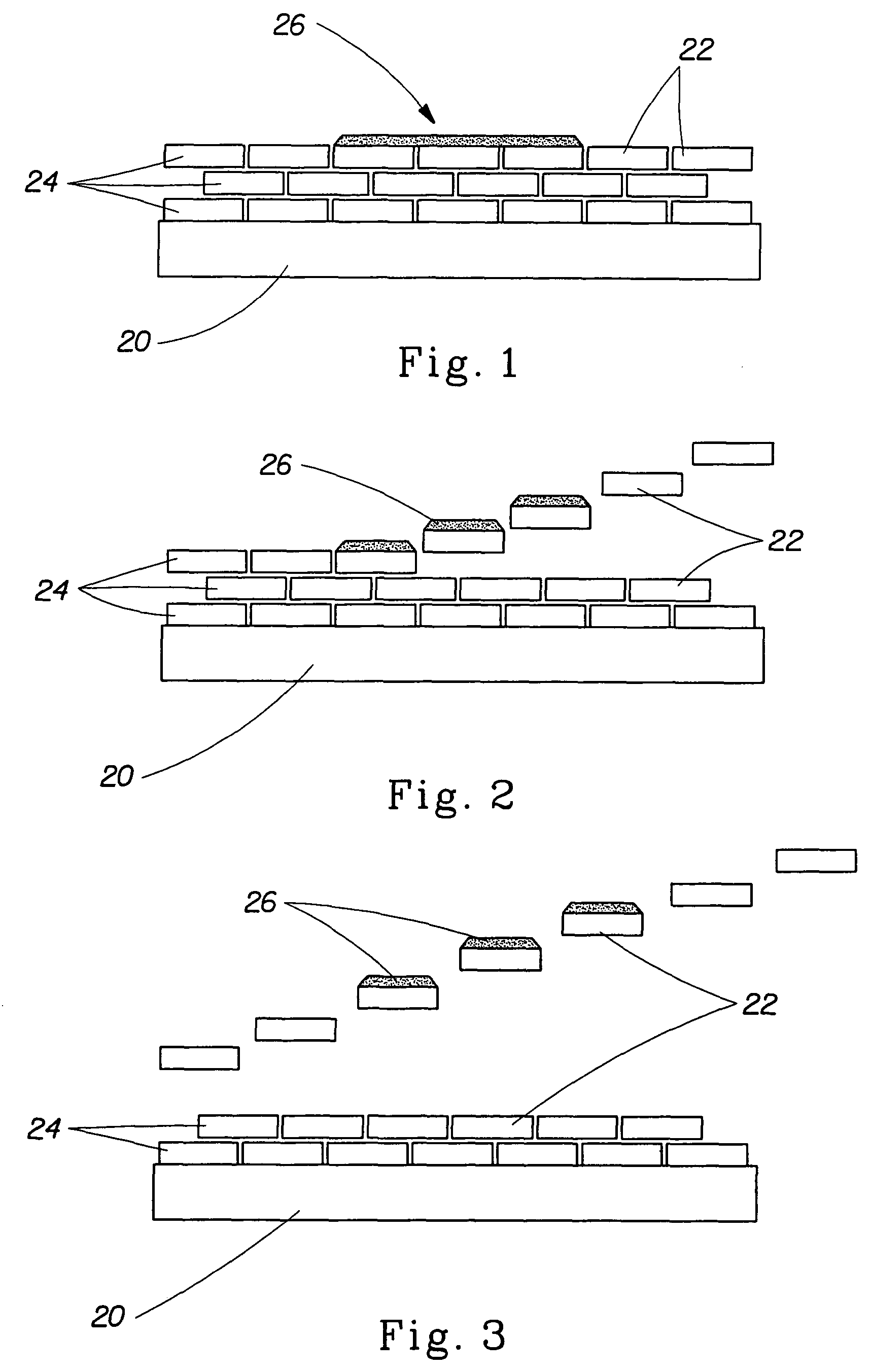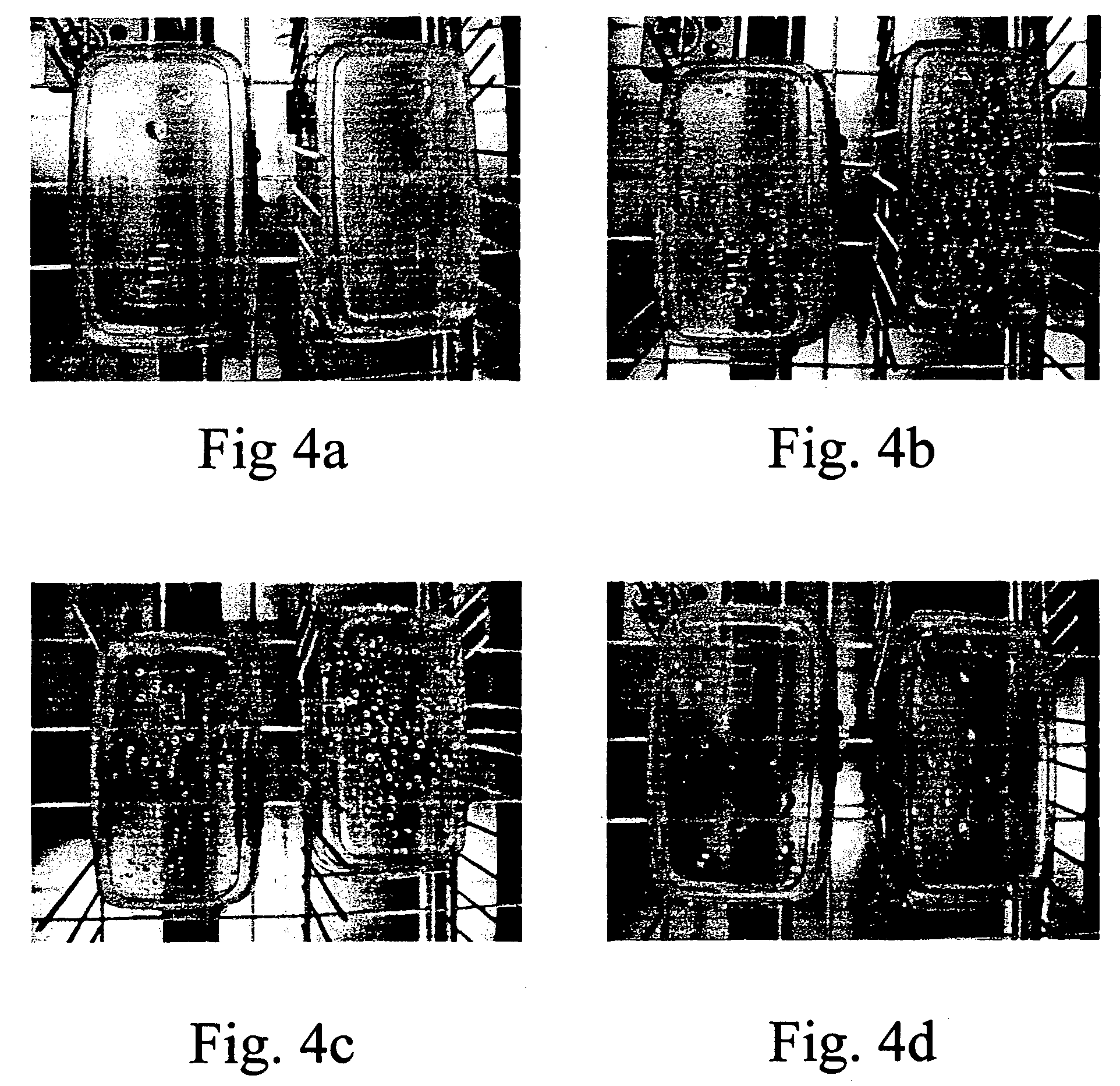Rinse aid surface coating compositions for modifying dishware surfaces
a technology of surface coating and dishware, applied in the direction of synthetic resin layered products, water/sewage treatment by ion exchange, chemical/physical processes, etc., can solve the problems of limiting the surface that can be modified, non-disposing, and film formation of polymers, so as to improve wetting and sheeting, improve the effect of wetting and sheeting, and prevent film formation
- Summary
- Abstract
- Description
- Claims
- Application Information
AI Technical Summary
Benefits of technology
Problems solved by technology
Method used
Image
Examples
example 1
[0253]In Example 1, the coating and spot formation effects of nanoclay (LAPONITE RD™) as a rinse aid on a standard set of glasses were determined at various concentrations of LAPONITE RD™ relative to no nanoclay or no commercially available rinse aid in the rinse cycle. Results are shown in Table 1. This experiment was conducted in a commercially available General Electric automatic dishwasher, GE 500, using Cascade powder detergent in the main wash at a concentration 7.1 g / L. The wash temperature was 55° C. and water hardness was adjusted to 3.3 mM (Calcium:Magnesium=3:1).
[0254]
TABLE 1TreatmentFilming GradeSpotting GradeNo rinse aid4.97.9 25 ppm LAPONITE1 RD ™8.77.6100 ppm LAPONITE RD ™108.7500 ppm LAPONITE RD ™108.41Nanoclay can be any of the available synthetic hectorite clays, such as LAPONITE ™ available from Southern Clay Products, Inc.
Structural Variation of Nanoclay on Coating / Spot Formation
example 2
[0255]The effect of structural variation of nanoclay (LAPONITE RD™ versus LAPONITE B™) as a rinse aid on the spot and coating formation was investigated on a standard set of glasses. The experiment was conducted in a GE 500 appliance at 55° C. wash temperature and water hardness of 3.3 mM (calcium:magnesium=3:1). Cascade powder was used as a wash detergent of 7.1 g / L concentration. In this experiment, the effect of concentration of LAPONITE B™ on the spot, coating formation behavior was also examined. The results are shown in Table 2.
[0256]
TABLE 2Coating Grade,Treatment1st cycleSpot Grade, 1st cycleNo rinse aid4.47.8LAPONITE RD ™, 25 ppm7.37.1LAPONITE B ™, 25 ppm8.37.5LAPONITE B ™, 10 ppm8.07.7
Effect of Polyacrylate on Coating Formation of Nanoclay
example 3
[0257]The influence of dispersant polymer (polyacrylate, MW 4500) on the coating formation behavior of nanoclay (LAPONITE B™) on a set of standard glasses in a single- and multi-cycle rinse relative to a commercially available rinse aid was assessed. The experiment was performed in a GE 500 appliance using cascade powder in the main wash (7.1 g / L) at a temperature of 55° C. and 2.0 mM water hardness (Ca:Mg=3:1) hardness. The result of this experiment is shown in Table 3.
[0258]
TABLE 3Coating GradeTreatment1st Cycle4th CycleCommercial rinse aid (280 ppm)5.86.7LAPONITE B ™ (25 ppm)7.58.4LAPONITE B ™ (25 ppm) + Polyacrylate1 (59.58.4ppm)1Poly (acrylic / maleic) and Polyacrylate 4500 from Rohm and Haas / Alco / BSF.
[0259]Effect of Polyacrylate on Spot Formation of Nanoclay
PUM
| Property | Measurement | Unit |
|---|---|---|
| cloud point | aaaaa | aaaaa |
| cloud point | aaaaa | aaaaa |
| thick | aaaaa | aaaaa |
Abstract
Description
Claims
Application Information
 Login to View More
Login to View More - R&D
- Intellectual Property
- Life Sciences
- Materials
- Tech Scout
- Unparalleled Data Quality
- Higher Quality Content
- 60% Fewer Hallucinations
Browse by: Latest US Patents, China's latest patents, Technical Efficacy Thesaurus, Application Domain, Technology Topic, Popular Technical Reports.
© 2025 PatSnap. All rights reserved.Legal|Privacy policy|Modern Slavery Act Transparency Statement|Sitemap|About US| Contact US: help@patsnap.com



